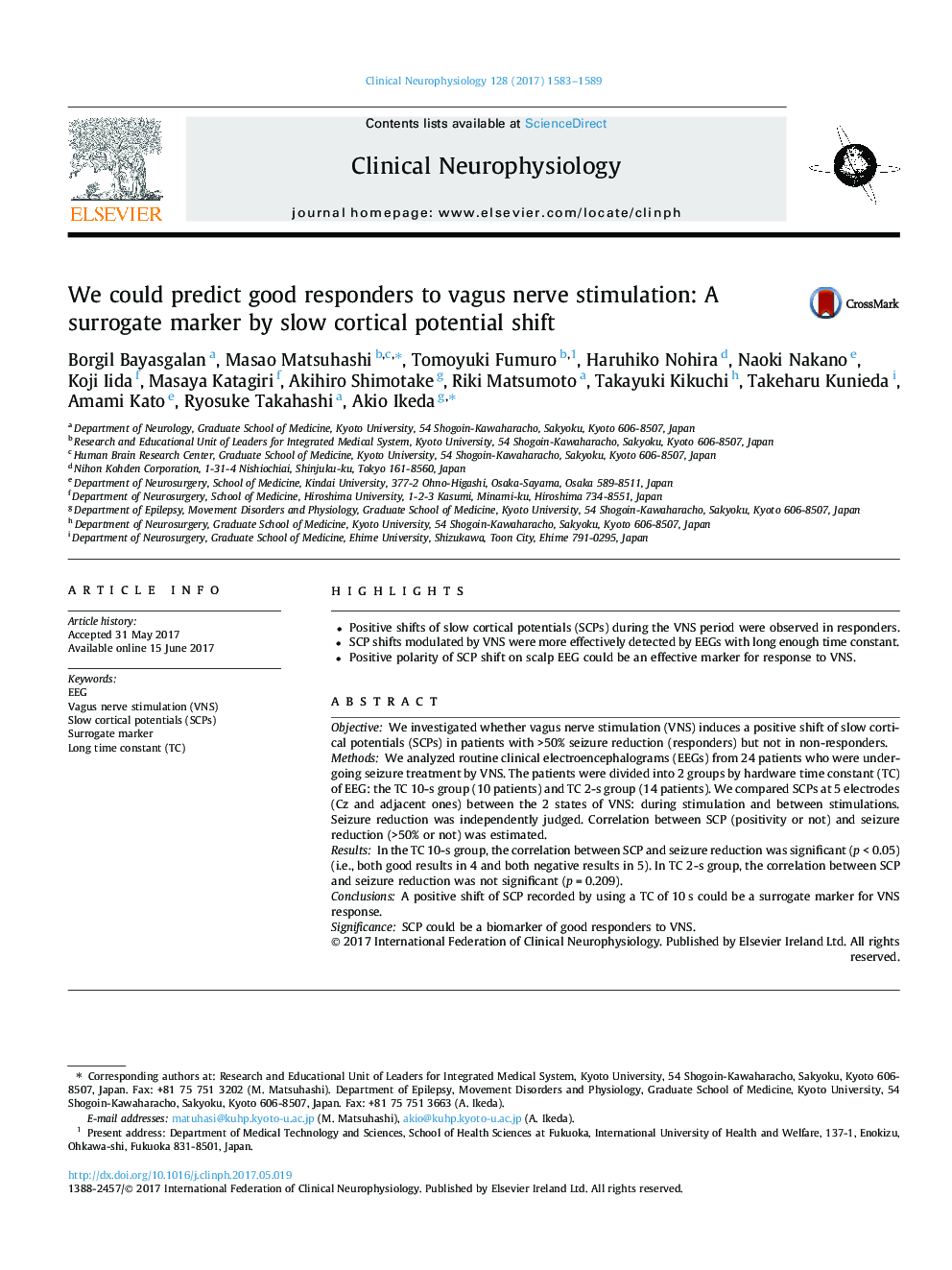| Article ID | Journal | Published Year | Pages | File Type |
|---|---|---|---|---|
| 5627230 | Clinical Neurophysiology | 2017 | 7 Pages |
â¢Positive shifts of slow cortical potentials (SCPs) during the VNS period were observed in responders.â¢SCP shifts modulated by VNS were more effectively detected by EEGs with long enough time constant.â¢Positive polarity of SCP shift on scalp EEG could be an effective marker for response to VNS.
ObjectiveWe investigated whether vagus nerve stimulation (VNS) induces a positive shift of slow cortical potentials (SCPs) in patients with >50% seizure reduction (responders) but not in non-responders.MethodsWe analyzed routine clinical electroencephalograms (EEGs) from 24 patients who were undergoing seizure treatment by VNS. The patients were divided into 2 groups by hardware time constant (TC) of EEG: the TC 10-s group (10 patients) and TC 2-s group (14 patients). We compared SCPs at 5 electrodes (Cz and adjacent ones) between the 2 states of VNS: during stimulation and between stimulations. Seizure reduction was independently judged. Correlation between SCP (positivity or not) and seizure reduction (>50% or not) was estimated.ResultsIn the TC 10-s group, the correlation between SCP and seizure reduction was significant (p < 0.05) (i.e., both good results in 4 and both negative results in 5). In TC 2-s group, the correlation between SCP and seizure reduction was not significant (p = 0.209).ConclusionsA positive shift of SCP recorded by using a TC of 10 s could be a surrogate marker for VNS response.SignificanceSCP could be a biomarker of good responders to VNS.
